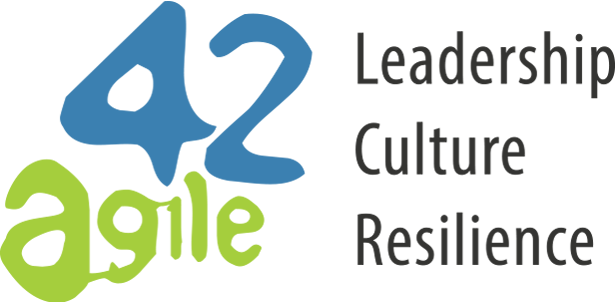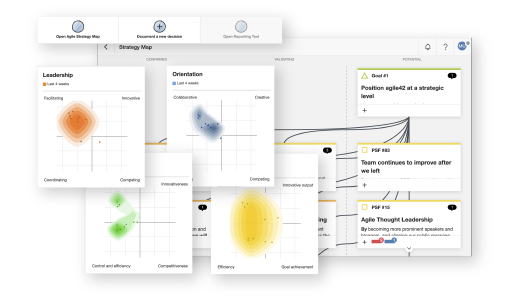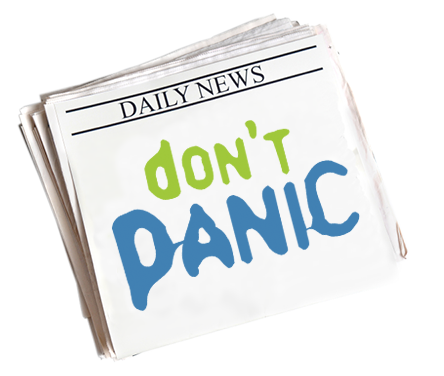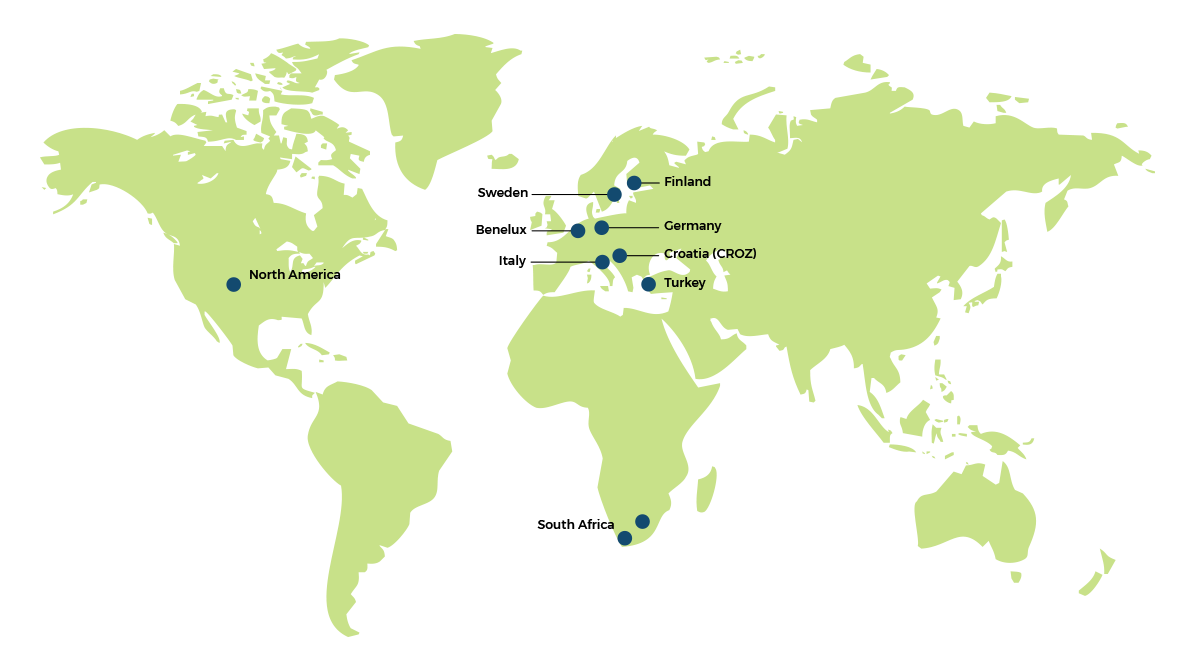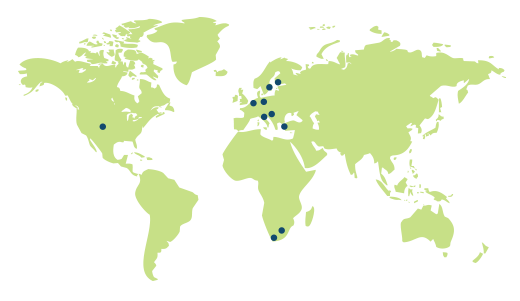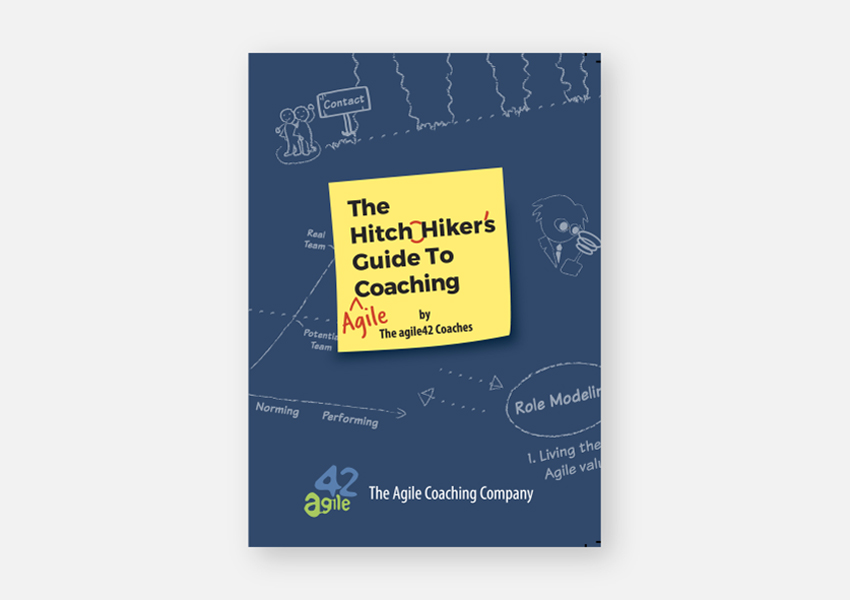Here you get a quick but detailed overview on the Scrum Framework. The whitepaper Scrum in a Nutshell describes the most important Scrum roles, Scrum artifacts and Scrum Ceremonies.
Scrum – The Agile Framework
Scrum is a Framework that enables iterative and incremental product development, allows toget things done at the right time, maximizing the value of what is delivered. Tasks are performed faster and with higher quality by self-organizing Teams. High levels of self-motivation are achieved and are the reason why Scrum allows teams to reach higher productivity faster. Customer requirements are constantly prioritized according to Business Value and integrated into the Product at regular intervals, allowing the customer to promptly provide feedback to the Team and thus improving the quality of the product on time.
A Scrum project mostly starts with a vision of the product or system to be developed. The vision might be vague at first, and for sure stated on market issues rather than technical terms. It will become clearer as the project moves forward. Out of this Vision the Product Owner is writing the Product Backlog.
At the start of an iteration (Sprint), the Product Owner is presenting the prioritized Product Backlog to the team, which selects what it believes it can turn into an increment of potentially shippable functionality by the end of the Sprint. Doing so, the Sprint Backlog is created. After, the team is left alone to develop the features they have chosen. The team now takes a deeper look at the requirements, considers the available technology, and evaluates its own skills and capabilities. It then collectively determines how to build the functionality, modifying its approach daily to find out new complexities or difficulties. The team figures out what needs to be done and selects the best way to do it. This creative process is the core of the Scrum productivity. At the end of the Sprint, the team presents the increment of functionality to the Product Owner so he can on one side inspect the functionality and on the other side make timely adaptations to the project.
Scrum Roles
Scrum knows 3 roles:
- Product Owner
- Team
- Scrum Master
All responsibilities to manage the project are divided among these three roles.
Product Owner
The Product Owner represents the interests of everyone with a stake in the project (Stakeholder) and he is responsible for the final product. He elicits the product requirements form the Stakeholder, creates the Product Backlog (Requirements broken down to User Stories), is responsible for the return on investment (ROI), and he is making the release plan. The Product Owner prioritizes the Product Backlog using Business Value Points to ensure that the most valuable functionality is developed first.
The tension between what the business wants and what the team can do is what makes Scrum such an effective vehicle for high quality production.
The Team
The team figures out how to turn the Product Backlog into an increment of functionality within a Sprint. Each team member is jointly responsible for the success of each iteration and of the project as a whole. The Team is responsible for/to:
- software quality
- technical implementation of User Stories
- delivery of functional software increment
- organize themselves
The Scrum Master
The Scrum Master is responsible for the Scrum process. He ensures everybody plays by the rules. He also removes impediments for the Team. The Scrum Master is not part of the Team.
Pigs and Chickens – Committed or Involved?
The three described Roles have committed to the project. Others might be just interested (involved) in the project, but they are not on the hook. Scrum makes a clear parting between these two groups. Committed: The Roles who are responsible for the project have the authority to do what is necessary for its success. Involved: The other Stakeholders who aren’t responsible for the direct success can’t interfere unnecessarily.
It should always be clear who for example is responsible for the ROI, and who has a stake in the ROI but isn’t accountable.
The Scrum – Joke
A chicken and a pig are walking down the road. The chicken says to the pig, ”Do you want to open a restaurant with me?” The pig considers the question and replies, ”Yes, I’d like that. What do you want to call the restaurant?” The chicken replies, ”Ham and Eggs!” The pig stops, pauses, and replies, ”On second thought, I don’t think I want to open a restaurant with you. I’d be committed, but you’d only be involved.”
Scrum Artifacts
Scrum knows 3 main Artifacts:
- Product Backlog
- Burndown Chart
- Sprint Backlog
Product Backlog
The requirements for the product are listed in the Product Backlog. It is an always changing, dynamically prioritized list of requirements ordered by Business Value. Requirements are broken down into User Stories by the PO.
Burndown Chart
The Burndown chart shows the amount of work remaining per Sprint. It is a very useful way of visualizing the correlation between work remaining at any point in time and the progress of the Team(s). It inspects their progress in relation to the Planning by using the Burndown Chart, and makes adjustments as necessary.
Sprint Backlog
The Sprint Backlog contains all the committed User Stories for the current Sprint broken down into Tasks by the Team. All items on the Sprint Backlog should be developed, tested, documented and integrated to fullfil the commitment.
Potentially Shippable Product Functionality
Scrum requires Teams to build an increment of product functionality every Sprint. This increment must be potentially shippable, because the Product Owner might choose to immediately implement the functionality. This requires that the increment is:
- thoroughly tested
- well-structured
- well-written code
- user operation of the functionality is documented
New Management Responsibilities
The three main roles – Product Owner, Scrum Master, and Team – are management roles. They are all “Pigs”, because they are committed in the project.
All the other managers in an organization are chickens, who might be interested in the project and who might have a strong interest in its success, but they have to work through the pigs. They are just involved, and therefore they have no direct authority over the project’s execution or progress. Scrum can greatly simplify issues of accountability and authority related to projects, but the Scrum management roles are difficult to play. Managing complex work is never easy, but using Scrum practices regularly will make visible the project’s progress, problems, and sociology.
Scrum – easy to use?
Scrum sounds easy and right after you have read this short document you might have the feeling that you could start without any problems. That’s wrong! As any other method, process or framework also scrum will probably causes deep changes to the way you are working so be prepared 🙂
We suggest to invest in a consulted and guided Sprint, which includes Training for all roles to make sure your are on the right way.
These are costs, yes, and you might think that we have to say that ;-), but better spending some money at the beginning to be sure how to do Scrum, than starting a never ending trying phase.
